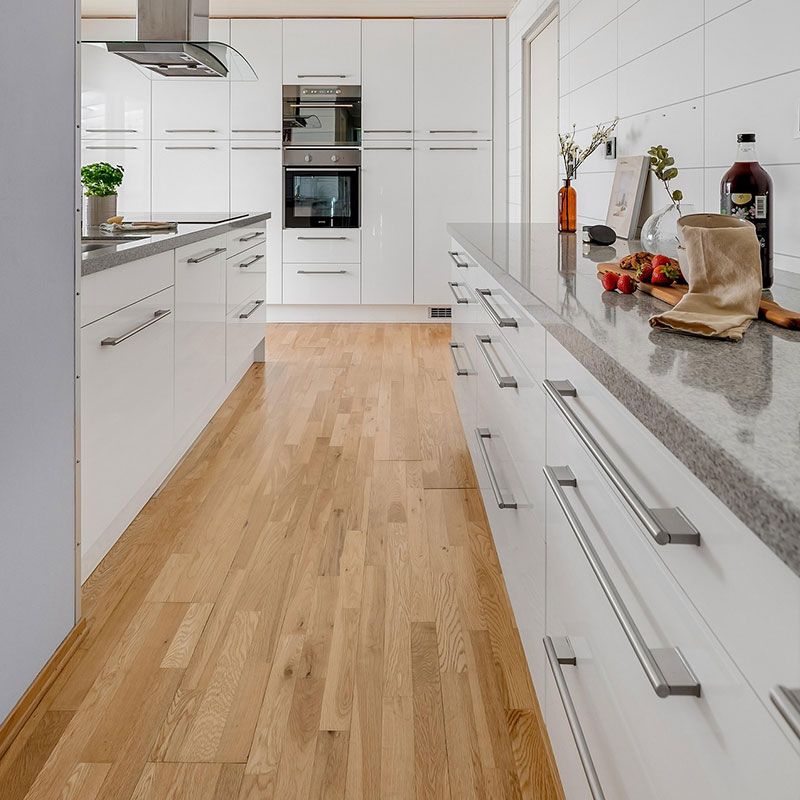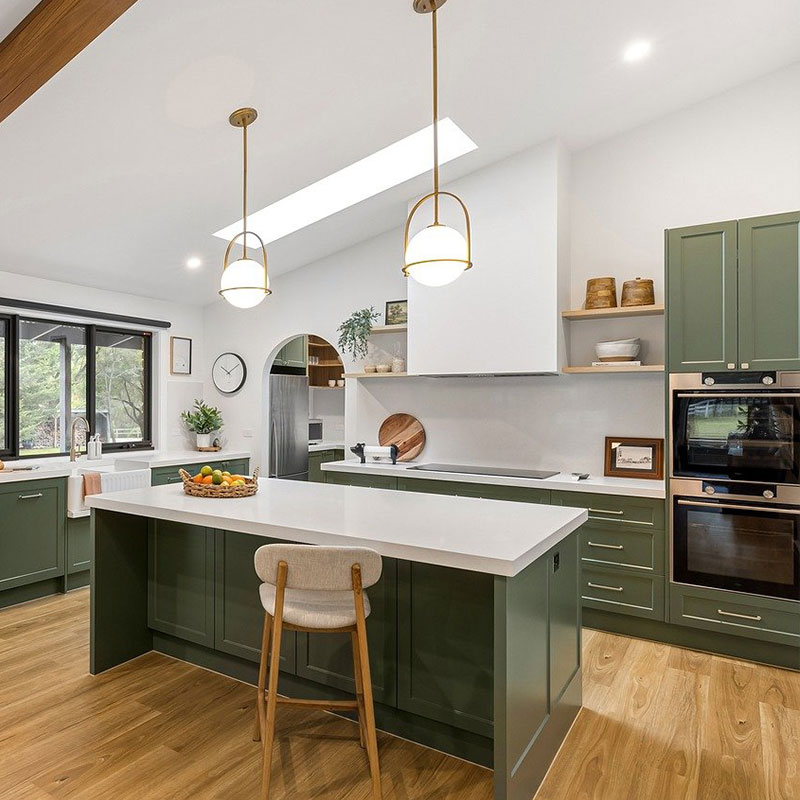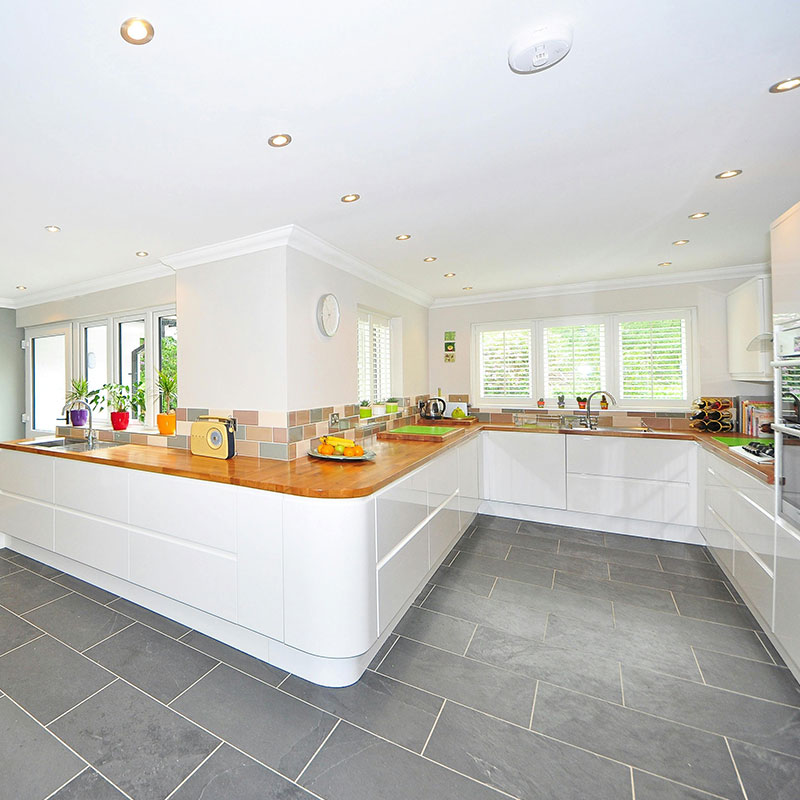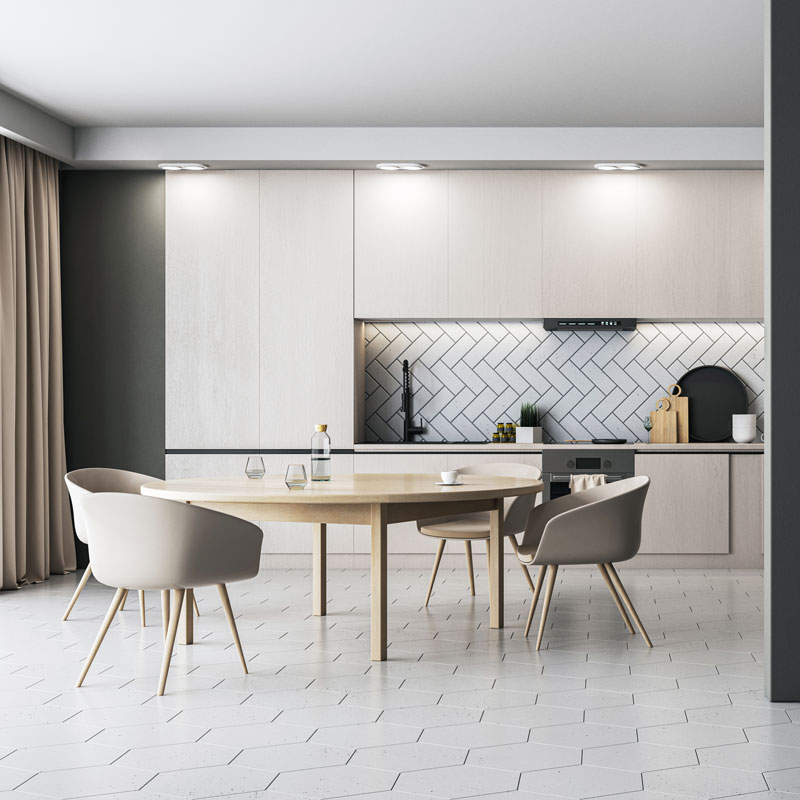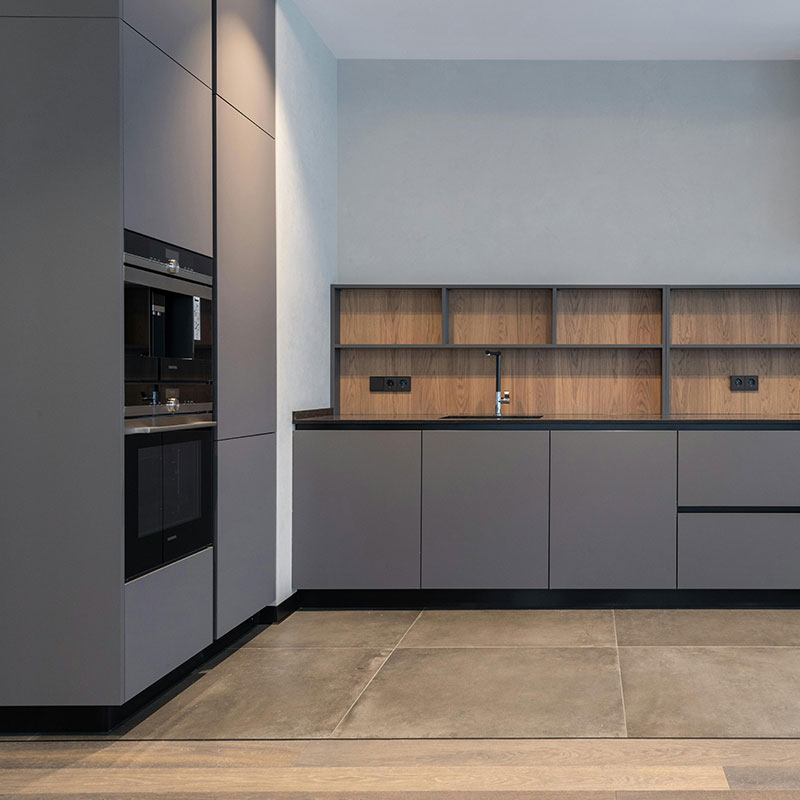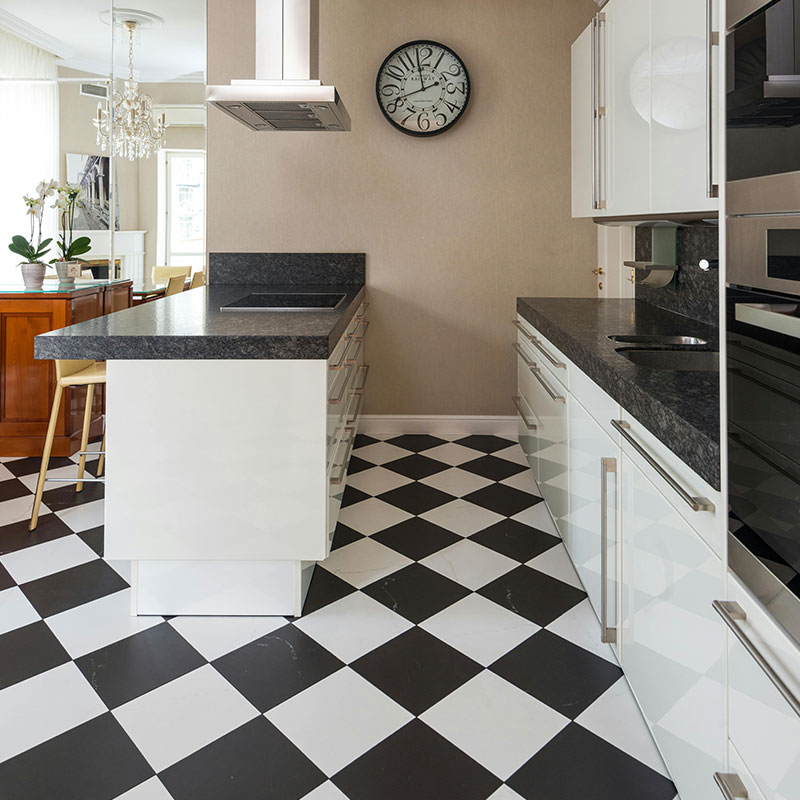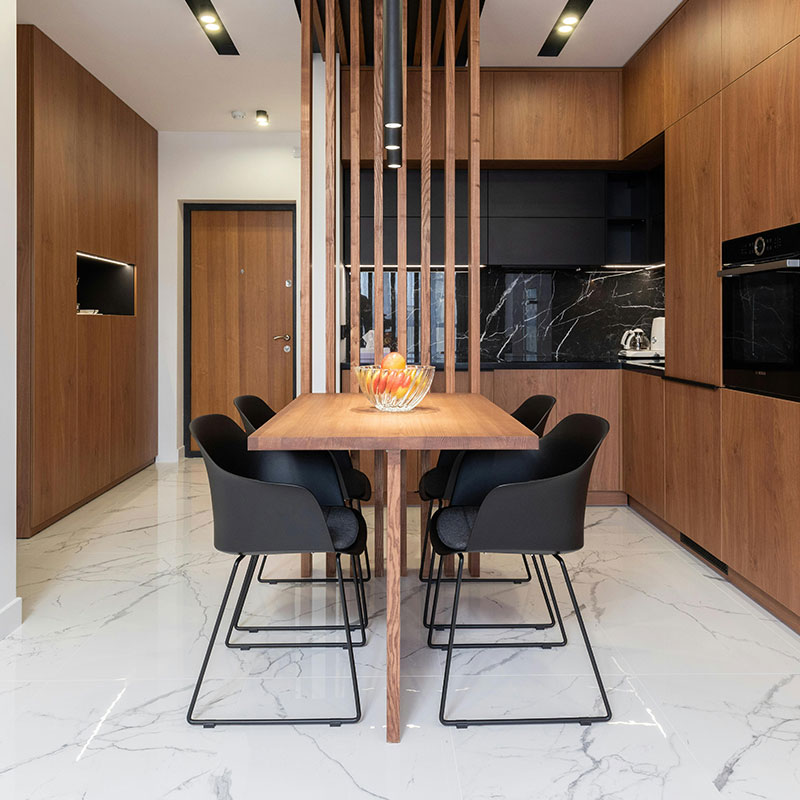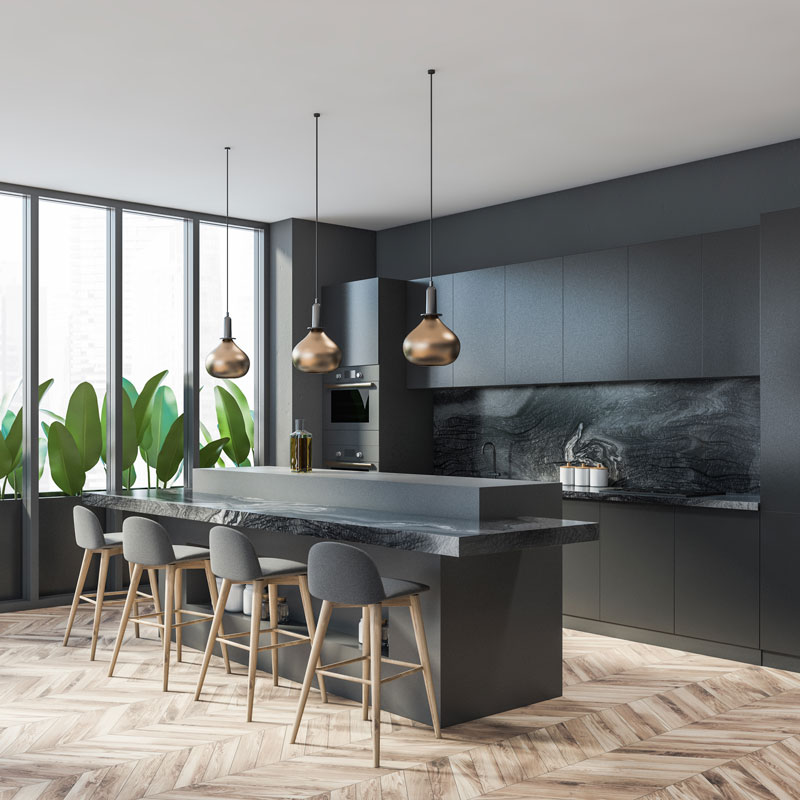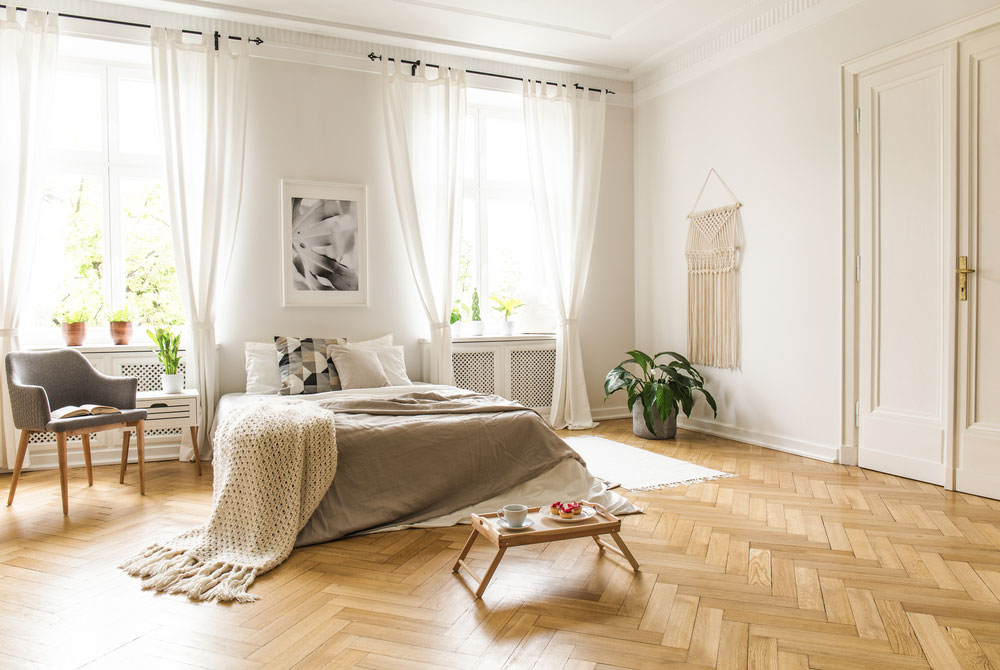The Best Flooring for Kitchens: A Complete Guide
When it comes to choosing the best flooring for your kitchen, the decision isn’t just about aesthetics. It’s about durability, budget, and how well it suits your lifestyle.
Kitchens are high-traffic, high-spill zones, so the flooring must handle everything from dropped pans to splashes of water. Let’s explore the best kitchen flooring options and help you make an informed choice and share some kitchen flooring ideas.
What Affects the Choice of Kitchen Flooring?
Before diving into materials, consider the following factors:
- Budget: How much are you willing to spend on materials and fitting? Some options, like luxury vinyl, offer great value, while natural wood may stretch the wallet.
- Durability: Kitchens endure heavy use. Your flooring should resist wear, spills, and scratches.
- Size and Light: A small, dark kitchen might benefit from light-reflecting floors, while a larger space allows for bolder designs.
- Heating: If you have or plan to install underfloor heating, the flooring must be compatible.
- Style: Your kitchen floor sets the tone. Do you prefer rustic charm, sleek modernity, or something in between?
- Ease of Fitting: Professional installation is often required for tiles or wood, but some vinyl products are DIY-friendly.
Best Kitchen Flooring Options
1. Tiles: Timeless and Durable
Tiles remain a top choice for kitchen flooring. They’re water-resistant, hard-wearing, and come in a variety of styles.
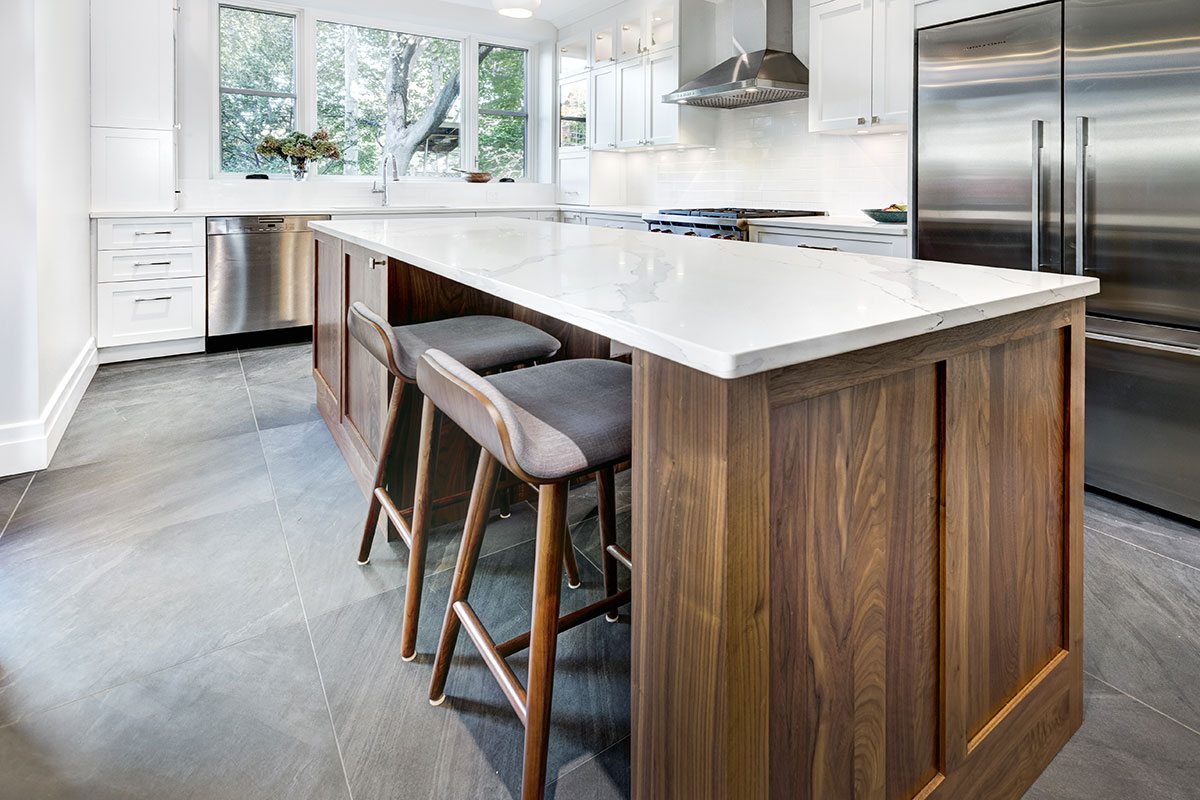
Pros:
- Durability: Porcelain and ceramic tiles are highly resistant to wear and tear.
- Waterproof: Perfect for kitchens where spills are common.
- Design Options: Endless styles, from classic white subway tiles to bold patterned designs.
- Hygienic: Easy to clean and maintain, making them perfect for a busy kitchen.
- Natural Appeal with Stone Tiles: Solid stone tiles, such as slate or marble, offer a premium look. They bring a unique texture and natural charm to any kitchen, making them an excellent option for high-end spaces.
Cons:
- Cold Underfoot: Without underfloor heating, tiles can feel chilly.
- Hard Surface: Dropped dishes are unlikely to survive the impact.
- Cracking Risk: While tiles are durable, heavy objects like pots or pans can crack them if dropped.
- Installation Cost: Tiles, especially solid stone, require professional fitting, which adds to the expense.
Best Tile for Kitchen Floors:
Porcelain tiles are considered the best material for kitchen floor tiles because they’re more durable and less porous than ceramic. Solid stone tiles, while luxurious, require sealing to protect against stains. For a sleek modern look, consider large-format tiles, while smaller tiles suit a rustic or traditional kitchen.
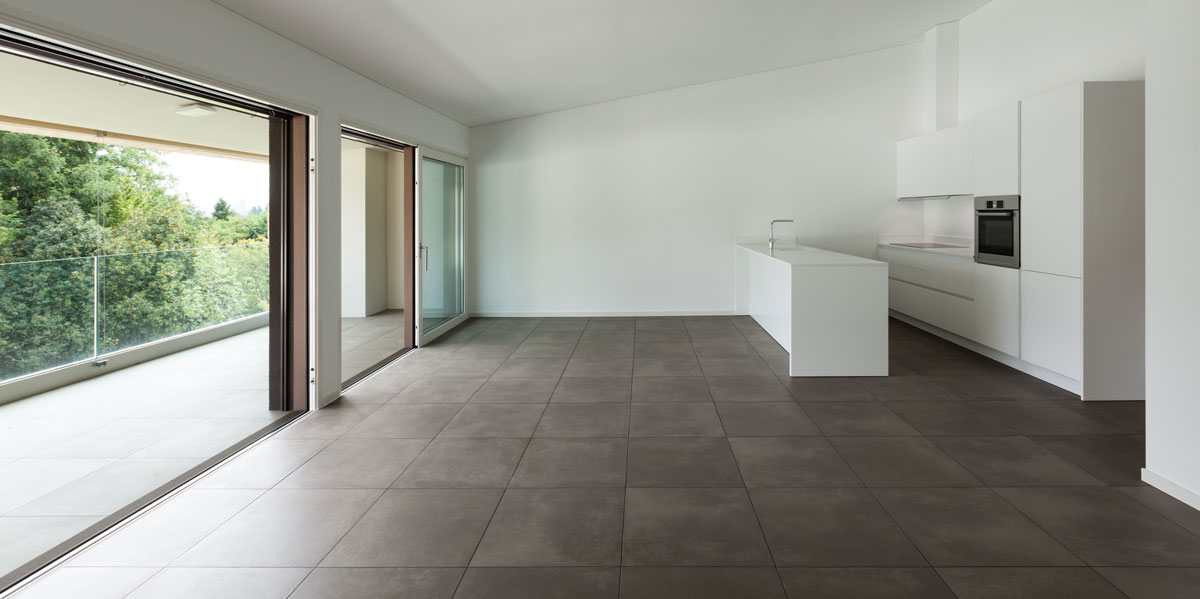
2. Wood Flooring: Warmth and Elegance
Wood floors bring natural warmth and charm to a kitchen. But not all wood flooring is created equal.
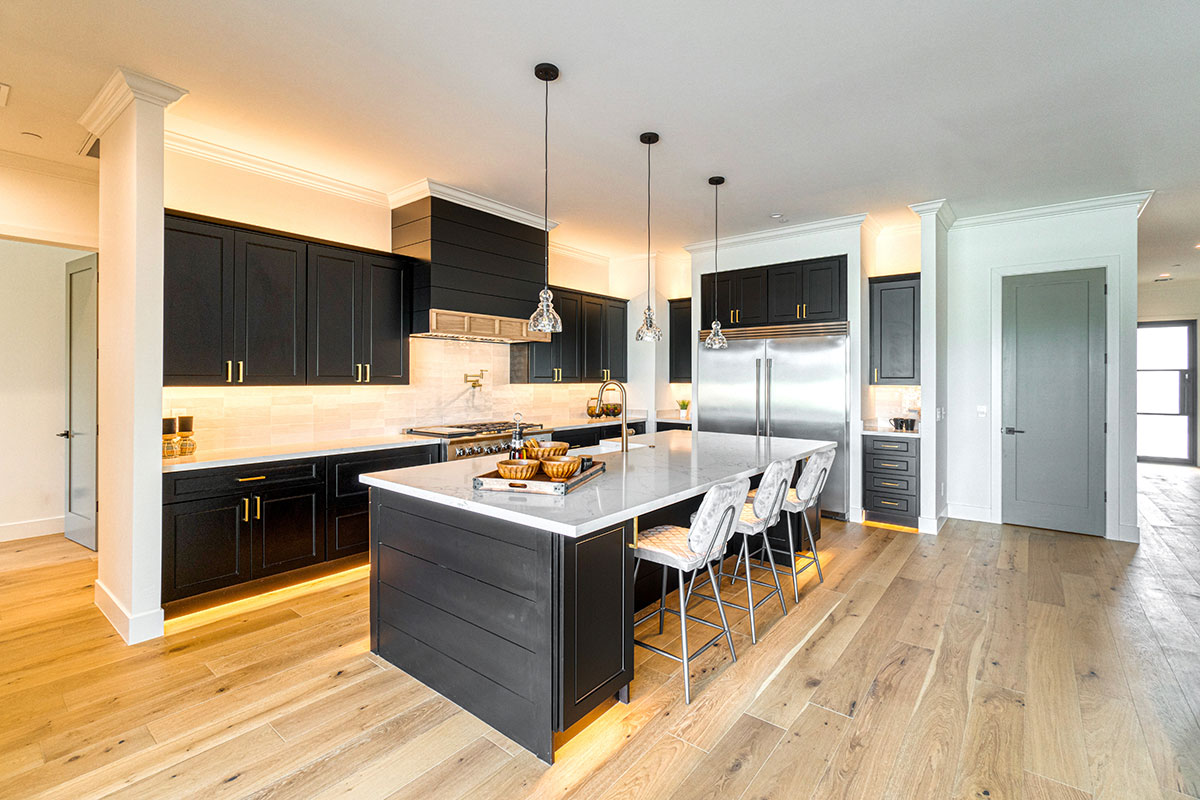
Solid Wood Flooring:
- Best for large kitchens with low moisture levels.
- Needs regular sealing to protect against spills.
Engineered Wood Flooring:
- More stable than solid wood due to its layered construction.
- Resists warping in humid conditions, making it suitable for kitchens.
Laminate Flooring:
Laminate is a cost-effective alternative to natural wood. It mimics the look of real wood but is made from compressed fibreboard with a photographic layer on top.
Pros of Laminate:
- Affordability: Cheaper than solid or engineered wood.
- Durable Coating: Resistant to scratches and stains, making it family-friendly.
- DIY-Friendly: Easier to install than traditional wood flooring.
Cons of Laminate:
- Water Sensitivity: Prolonged exposure to moisture can cause swelling and damage.
- Lifespan: Doesn’t last as long as solid or engineered wood.
- Authenticity: Can have a unrealistic and feel.
Pros of Wood Flooring (Overall):
- Aesthetic Appeal: Adds character and complements various kitchen styles.
- Comfort: Softer and warmer underfoot than tiles.
- Durability: Engineered wood and laminate resist scratches and dents better than solid wood.
Cons of Wood Flooring (Overall):
- Water Sensitivity: Wood can warp or stain if exposed to moisture for long periods. Laminate is more water-resistant than traditional wood but not waterproof.
- Maintenance: Requires sealing and careful cleaning.
- Cost: High-quality wood flooring, especially engineered and solid wood, isn’t cheap.
If you’re looking for the best floor for kitchens with a natural look and feel, engineered wood is a practical and stylish choice. For those on a budget, laminate provides a similar aesthetic without breaking the bank.
3. Vinyl Flooring: Affordable and Versatile
Vinyl flooring has evolved significantly in recent years, with Luxury Vinyl Tiles (LVT) leading the way as a stylish, durable, and affordable option for kitchens. Offering the look of premium materials like wood or stone without the high maintenance, LVT is quickly becoming a favourite for modern kitchens.
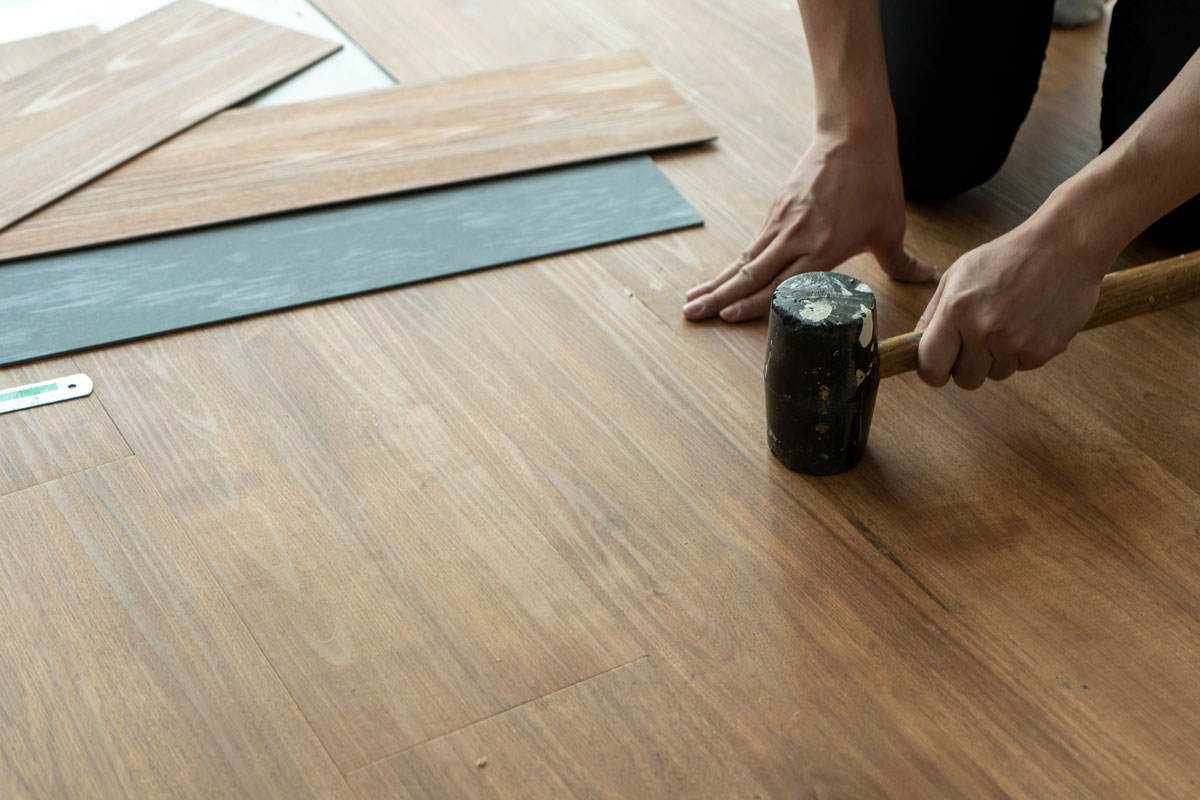
Luxury Vinyl Tiles (LVT):
LVT is a multi-layered vinyl product designed to mimic the appearance of natural materials like hardwood, stone, or ceramic tiles. Its realistic designs, combined with its practicality, make it one of the best flooring options for kitchens. Some popular brand include: Karndean, Polyflor, Quick-Step, Gerflor, Moduleo…
Key Features of LVT:
- Waterproof: Perfect for a high-spill environment like the kitchen. Unlike wood or laminate, LVT won’t warp or swell when exposed to moisture.
- Durability: Its wear layer protects against scratches, scuffs, and stains, making it ideal for high-traffic kitchens.
- Comfort: Softer and warmer underfoot compared to tiles or solid stone.
- Easy Maintenance: Spills can be wiped away with minimal effort, and there’s no need for waxing or sealing.
- Realistic Look: Advanced printing technology creates highly realistic designs that closely mimic natural materials.
- Noise Reduction: Quieter than hard surfaces like tiles, thanks to its soft construction.
Styles and Designs: LVT offers an impressive variety of options to match any kitchen style:
- Wood-Look LVT: Mimics oak, walnut, or even distressed wood for a rustic or modern kitchen aesthetic.
- Stone-Look LVT: Offers the luxury of marble, slate, or limestone without the coldness or high price tag.
- Patterned LVT: For those who want a bold or trendy look, patterned designs like herringbone are available.
Installation Types:
- Click-Lock System: Ideal for DIY enthusiasts, this floating floor system snaps together without adhesive.
- Glue-Down: A more permanent option, perfect for high-moisture areas, but often requires professional fitting.
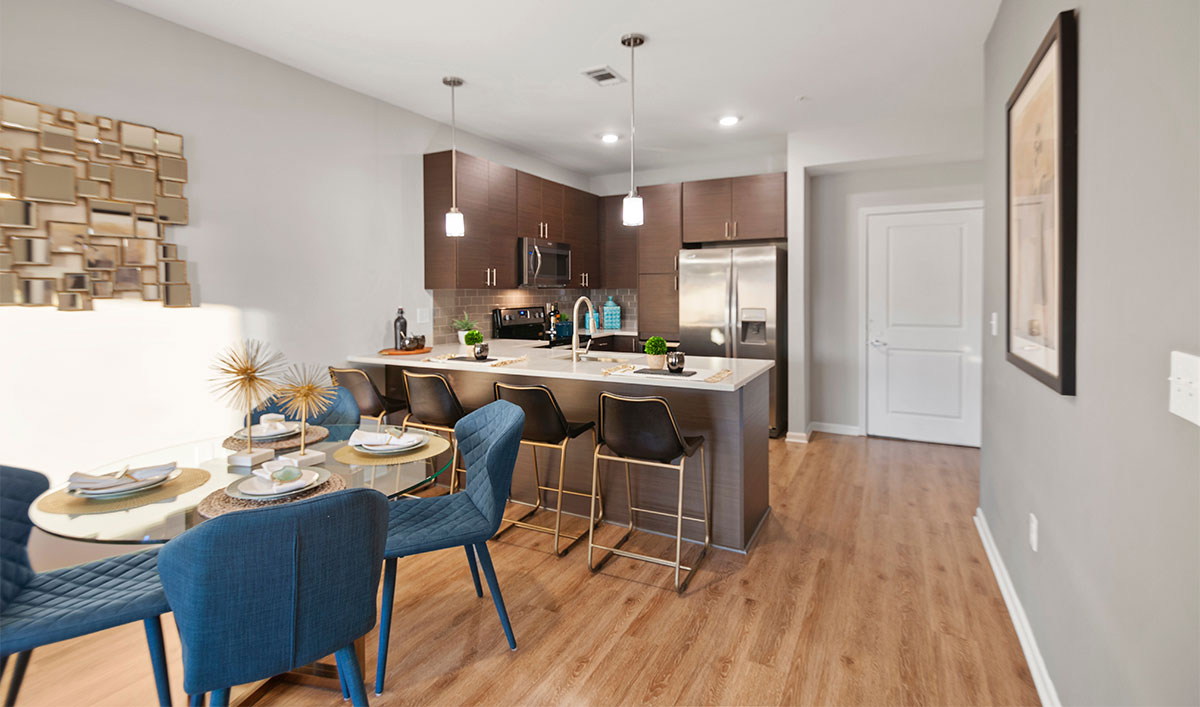
Pros of LVT:
- Waterproof and Stain-Resistant: One of the best waterproof flooring for kitchens.
- Durable: Resistant to wear, scratches, and dents, even in busy households.
- Cost-Effective: Provides a high-end look without the price tag of natural materials.
- Warm Underfoot: Unlike tiles or stone, LVT is naturally warmer and more comfortable to walk on.
- Versatile Designs: Suitable for both modern and traditional kitchens due to its wide range of styles.
Cons of LVT:
- Initial Investment: High-quality LVT can be pricier than basic vinyl or laminate, but it’s more affordable than wood or stone.
- Subfloor Preparation: Requires a smooth, level subfloor to ensure proper installation.
- Not as Eco-Friendly: While durable, vinyl isn’t as sustainable as natural materials like wood or stone.
Who Should Choose LVT?
If you’re looking for the best waterproof flooring for a kitchen that’s also stylish, comfortable, and low-maintenance, LVT is a fantastic choice. It works well for families with kids or pets and suits both small and large kitchens thanks to its versatility and wide range of designs for different kitchen floor ideas.
Special Considerations for Kitchen Flooring
1. Underfloor Heating
Not all flooring types are compatible with underfloor heating. Tiles and engineered wood are excellent conductors of heat, making them ideal choices. Vinyl can also work well but check the product specifications.
2. Small or Dark Kitchens
If your kitchen is small or lacks natural light, lighter flooring can create a sense of space. Look for pale wood tones, light grey tiles, or neutral vinyl patterns.
3. High-Traffic Kitchens
If your kitchen sees a lot of foot traffic, durability should be your top priority. Porcelain tiles and LVT are both robust options that can handle the wear and tear.
Budgeting for Your Kitchen Floor
When considering the best flooring for kitchens UK, price plays a significant role. Here’s a rough guide:
- Tiles: £30–£100 per square metre, plus fitting costs.
- Engineered Wood: £40–£80 per square metre, with higher prices for premium finishes.
- Vinyl: £20–£100 per square metre, making it the most budget-friendly option.
What’s the Best Flooring for Kitchens?
The answer depends on your priorities. If you need best waterproof flooring for a kitchen, go for vinyl or tiles. For warmth and elegance, engineered wood is unbeatable. And if you’re after low-maintenance kitchen floor options, tiles are a solid choice.
Ultimately, the best flooring for your kitchen will be one that balances practicality, style, and budget. Need help deciding? At MJ Kloss Carpentry, we offer expert advice and professional floor fitting to ensure your kitchen floor is perfect for your needs.
Ready to transform your kitchen? Contact us today for tailored advice and a no-obligation quote. We’re here to help you choose the ideal flooring for your space.
Kitchen Flooring Ideas & Inspiration
Below are a few kitchen flooring ideas to help you decide which way you go.
